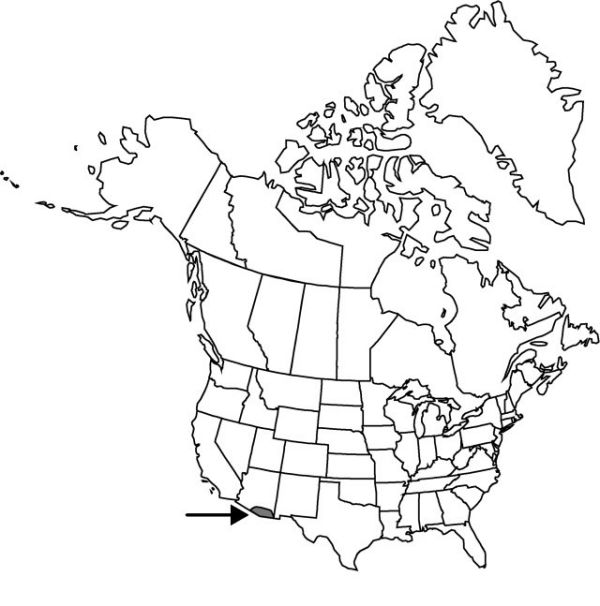Malaxis corymbosa
Revis. Gen. Pl. 2: 673. 1891.
Plants 6–40 cm. Pseudobulbs 5–15 mm diam. Leaves 1(–2, rarely), near middle of stem; blade green, glossy, oval or broadly elliptic, cordate, 3–9 × (1.2–)3–6.4 cm, apex acute. Inflorescences corymbose racemes, 1.5–3 cm; floral bracts triangular, 0.8–1.2(–2.5) mm, apex acute; pedicels crowded. Flowers 10–33, resupinate, green; sepals recurved at apex, ovate-elliptic or lanceolate, (2.8–)3.6–4.2 × 1.4–1(–2) mm, apex subobtuse to acute; petals strongly reflexed, crossing behind flower, linear to filiform, (2–)3.5–4 × 0.2–0.6 mm, apex obtuse; lip triangular, 3–4 × 1.5–2.3 mm, base upcurved, cordate or hastate-auriculate, apex entire, narrowly obtuse to somewhat abruptly acuminate; column 0.4–0.6(–1) × 0.4–0.6(–1) mm; pollinia yellow. Capsules horizontal to erect, ellipsoid, 12 × 4 mm.
Phenology: Flowering summer.
Habitat: Shaded mountain canyons
Elevation: 2000 m
Distribution

Ariz., Mexico, n Central America.
Discussion
Malaxis corymbosa grows in the Santa Rita, Huachuca, and Chiricahua mountains in Arizona. It differs from some of its close relatives in Mexico by having a more flattened and less fleshy lip that is less deeply concave proximal to anthers. Plants have 10–33 flowers open at one time and may produce a much larger number.
The hemipollinaria are apically widely divergent.
Selected References
None.